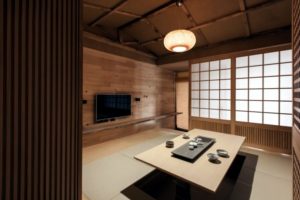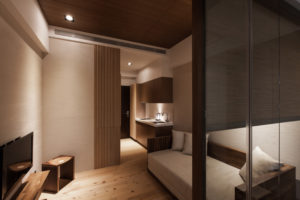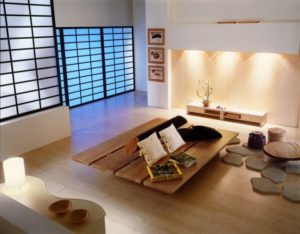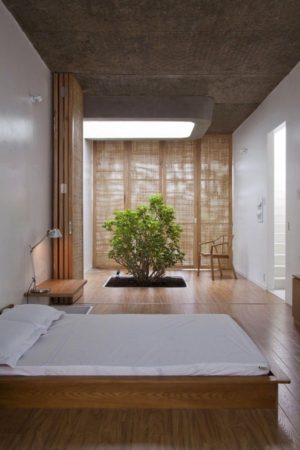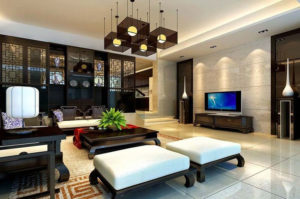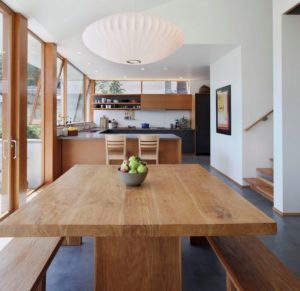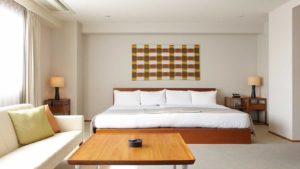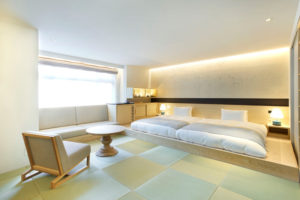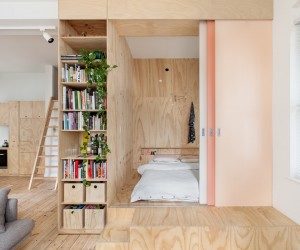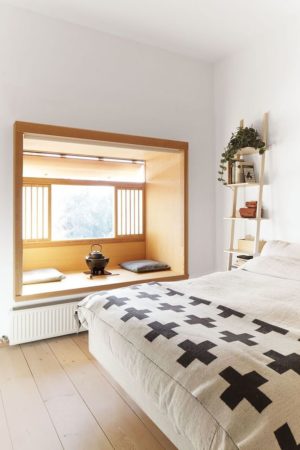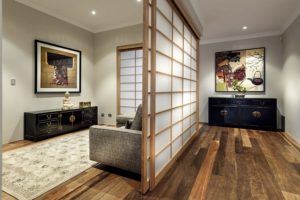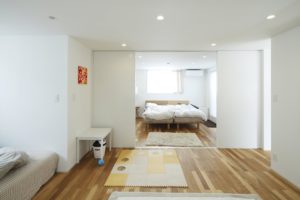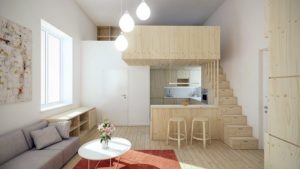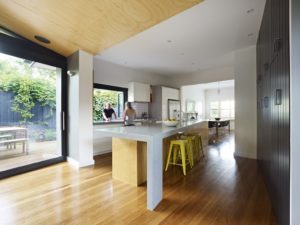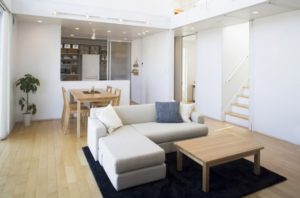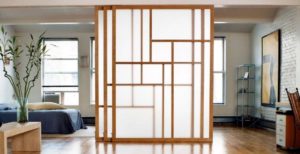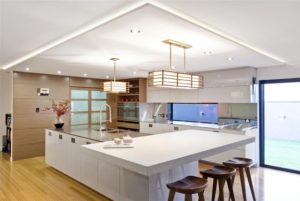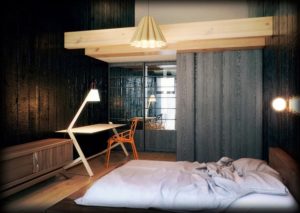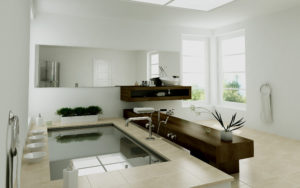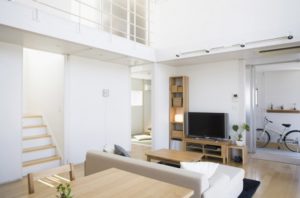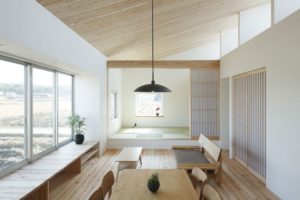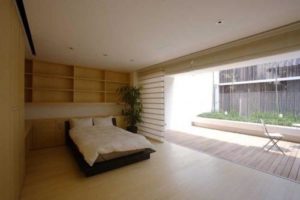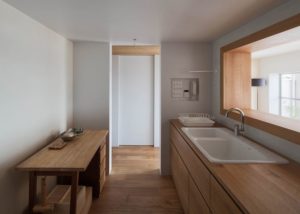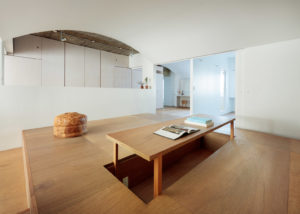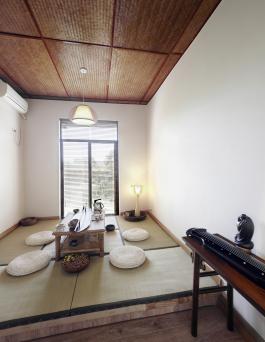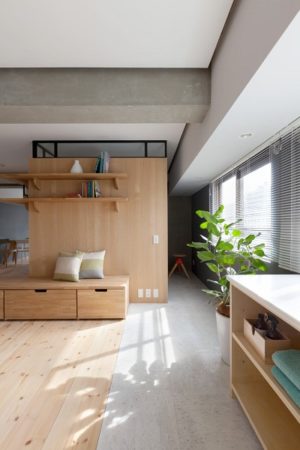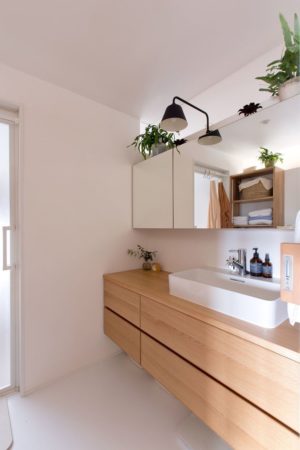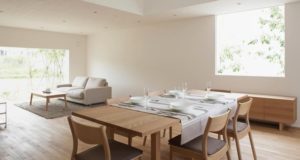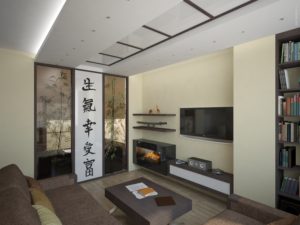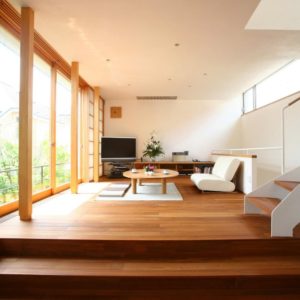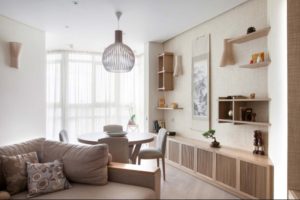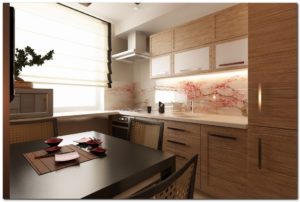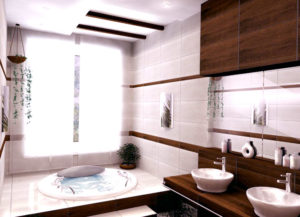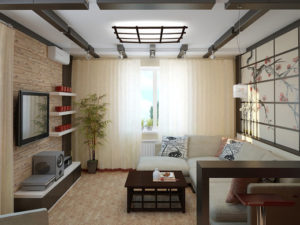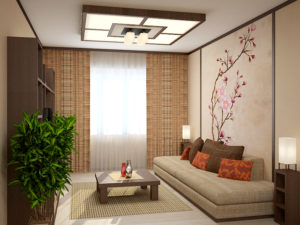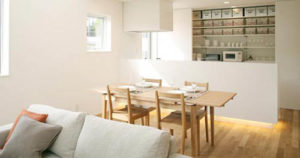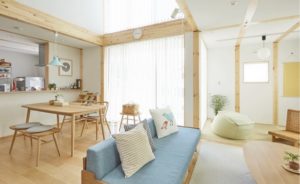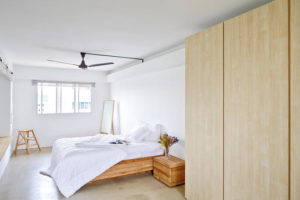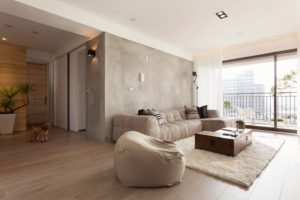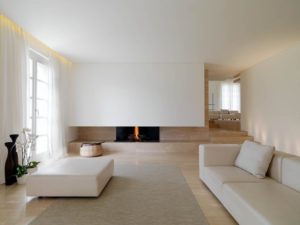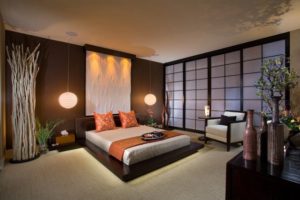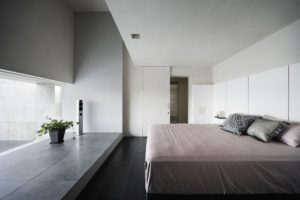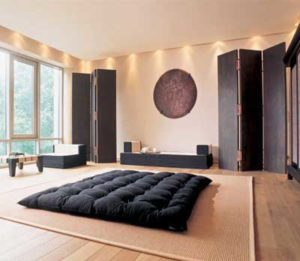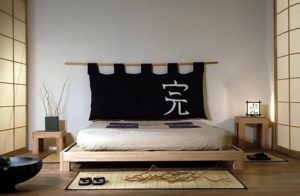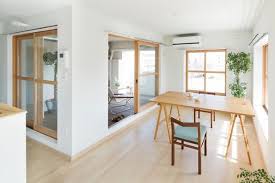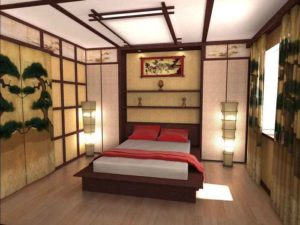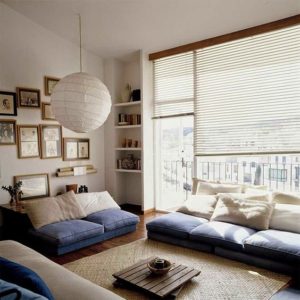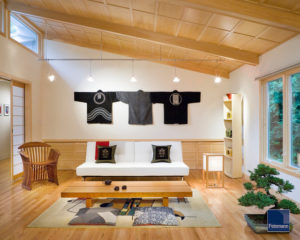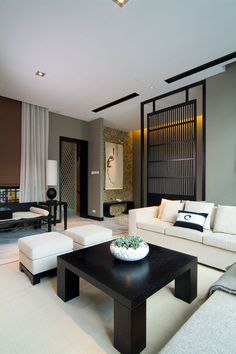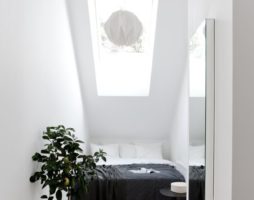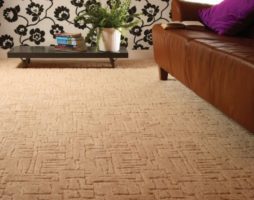Faced with the need to arrange the interior space of our home, each of us tries to find something in it that would help create an environment that is both comfortable for life and fill it with a non-trivial atmosphere of peaceful peace. The tasks can be successfully solved by implementingJapanese style in the interior.
- What is a Japanese interior?
- Who likes the Japanese style in the interior?
- Japanese-style interior minimalism: features of creation
- Japanese style apartment
- Living Room Design Ideas
- Bedroom Design Ideas
- Kitchen Design Ideas
- Bathroom Design Ideas
- Conclusion
- Photo gallery - Japanese style in the interior
- Video
This direction is sometimes difficult to understand on an intuitive level, but it is impossible to deny its charm. Popularityminimalist interior in japanese style Europeans can be explained, rather, by the possibility of saving space. Unusual atmosphere in full can be reproduced even in the smallest apartments. So what areJapanese interior decorating techniques? What must be done to make those who enter the house take their breath away with delight? Let's start our acquaintance with the style from scratch.
back to index ↑What is a Japanese interior?
It can be safely called the most popular representative of the direction of ethnic minimalism. In such an environment, there are no accents, nothing prevents the movement of the eye. The space is not overloaded with design elements, it is structured calmly and clearly. The simplicity of decor and ascetic furnishings is offset by the absolute rationality and practicality of the arrangement.

Japanese-style interior is not overloaded with details
Who likes the Japanese style in the interior?
In the Japanese performance, the east appears not just as a delicate matter. The interior looks elegant and even fragile, so this interior solution will not be understood and accepted by everyone. Who would be comfortable in such an environment?
First of all, pedants who do not tolerate disorder. Then people who do not have small children. Connoisseurs of space, silence and light. Nature lovers who dream of living surrounded by natural finishes will really understand and accept the beauty of the environment.
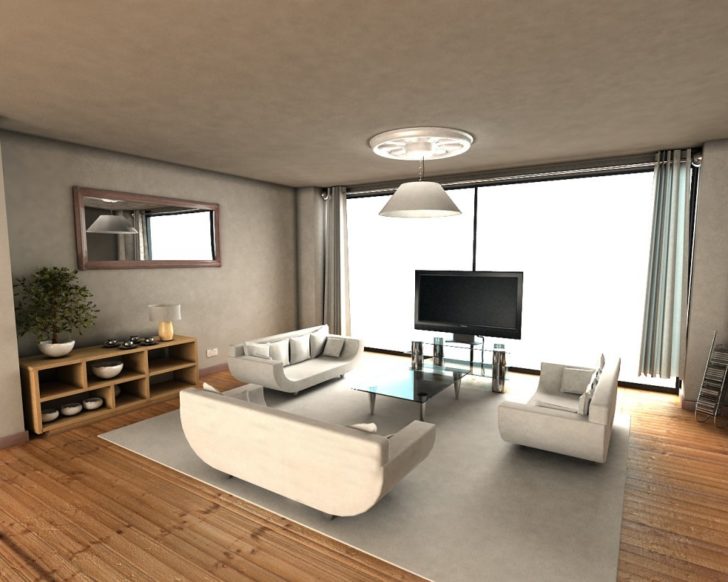
Japanese style in the interior
Naturally, they will not fail to surround themselves with the traditions of the Japanese style of nature, carried away by the study of oriental culture. Everyone who is detached from the hustle and bustle of the outside world, is distinguished by wisdom and has the gift of finding beauty in everyday things will feel like a fish in water in such a specific interior.
back to index ↑Japanese-style interior minimalism: features of creation
“Emptiness will become the basis of the Japanese-style apartment design line”
Perhaps the most striking thing about a Japanese home is the lack of walls. It does not consist of a combination of rooms, but of many functional areas, the selection of which occurs using:
- curtains;
- light screens;
- floor level changes;
- illumination;
- complex ceilings.
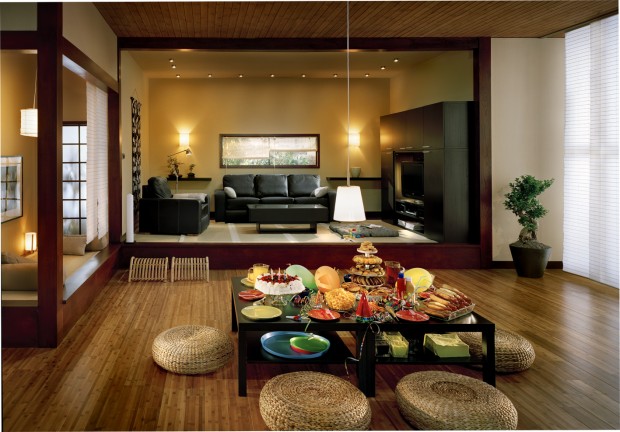
Different floor levels highlight functional areas
Traditional Japanese screens do not burden the space.They are mobile, which makes it easy to move them around the home territory and update its layout at least twice a day.
The basis of the Japanese-style apartment design line will be ... emptiness. Only she, according to the Japanese, is able to emphasize the elegance of those few items that fall into the house. So the second feature of the Japanese style in the interior can be considered minimalism squared. Since the excesses in the design of living space, according to their version, are ugly, only those things are added to the atmosphere that it will be impossible to do without. All household items are stored out of sight. They are stored in built-in wardrobes.

Minimalism is the main feature of the Japanese style
There is a lot of glass in the interior. Transparent shelves, cabinet doors, countertops, sliding partitions as if dissolved in the air. They don't seem to take up any space at all.
Textiles or blinds on the windows are also made of translucent materials. The partitions in the house, window decoration, mats are engaged in the role of interior decor. Ikebanas and sculptural figurines are designed to revive the homely atmosphere.
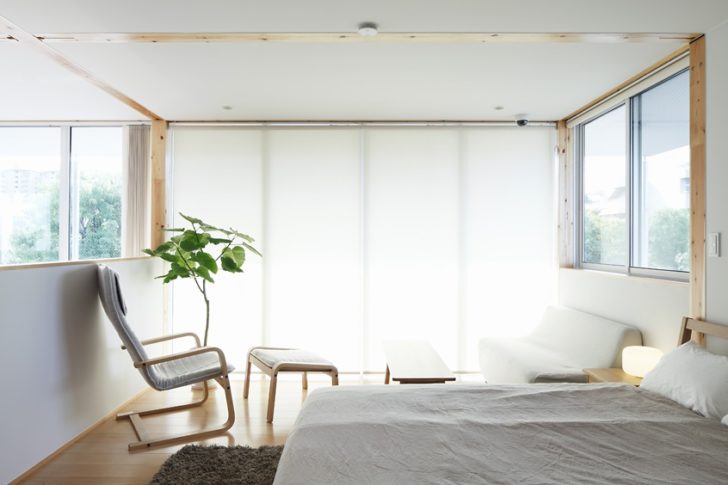
Plants bring life to a minimalist interior
Japanese interior decoration techniques include a play of contrasts. It is also a product of Japanese philosophy, trying to balance and balance any opposites: fire and water, earth and air, man and woman. And solutions to issues are certainly found, but in practice, the techniques for decorating a Japanese interior can look somewhat unexpected. Most often, contrast is expressed in color. White and black or light beige with wenge are to be combined, which, in principle, is a classic of the genre for Japanese interiors.

The combination of white and black in the interior
A Japanese-style apartment is exclusively natural materials. Finishing use:
- rice paper;
- straw;
- tree;
- bamboo.
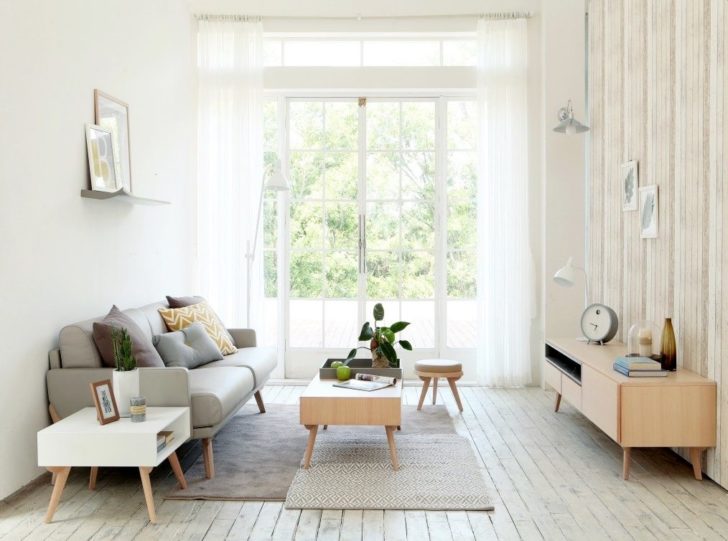
The decoration uses mainly natural materials.
Such an interior solution sets you in a meditative mood, makes you forget about the mortal fuss.
The third traditional feature of the Japanese style in the interior is low furniture and the absence of chairs. The last Japanese replaced the floors. A European who is ignorant of the cultural traditions of the nation will be discouraged and, of course, is unlikely to be able to immediately adapt to such an innovation. Although over time he will have a chance to appreciate all the convenience of the location of the rest of the furniture, oriented specifically for using it, without getting up from his seat. At first, the complete lack of soundproofing in the apartment will not delight. If light partitions are still able to hide what is happening behind them, then it is not in their power to block the path of sound. Here the serenity of sleep will come into question for us, and sorry for the delicate detail, the comfort of using the toilet room.
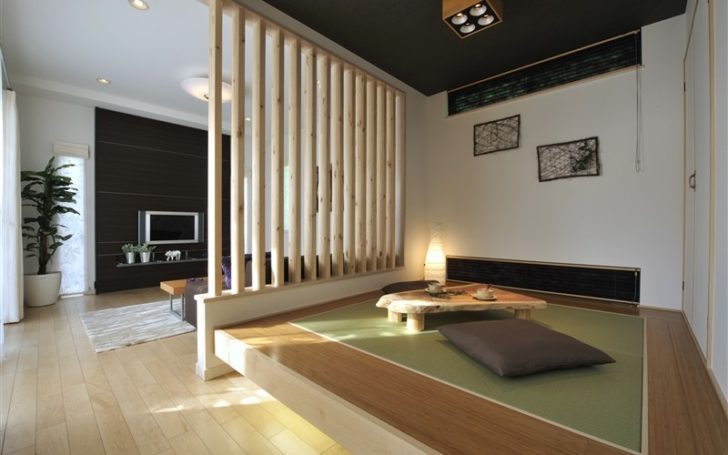
Low furniture - a traditional feature of Japanese style
The Japanese are unperturbed in this regard. They are confident that the sound of flowing water contributes to a philosophical mood, therefore, they recommend equipping immersion bathtubs equipped with seating in Japanese-style apartments of a very interesting design.
But back to Japanese-style furniture. All headsets are distinguished by the smoothness of light surfaces, which are certainly varnished. Cabinets, if possible, are replaced by niches, on the shelves of which vases and collections of netsuke are placed. Window glass or a partition panel may well replace a stained-glass window with a characteristic thematic pattern of sakura branches.

Replace bulky cabinets with air shelving
Hieroglyphs are another integral attribute of the Japanese style in the interior. They are often used to decorate textiles. Their images are present on bedspreads, bed linen, curtains. Features of Japanese pagodas are visible on ceramics, caskets, and national dishes.
Minimalism in the interior of the Japanese style dilutes the bonsai.The tiny coniferous tree is assigned the role of setting those living in the house to think about the immortality of the soul.
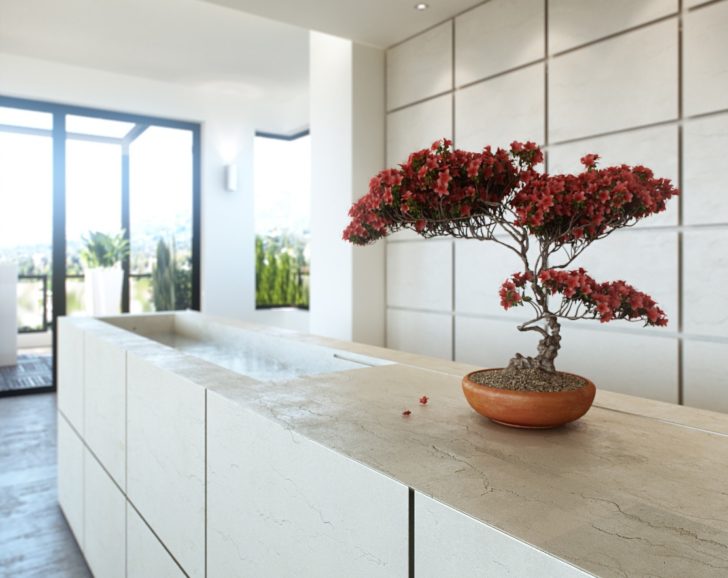
Bonsai will emphasize the style of the interior
Japanese style apartment
The organization of living space in Japanese is complex in its detailing. What is it expressed in? In the absolute absence of the possibility of improvisation and replacement of canonical elements with analogues. Although, on the other hand, this fact can be regarded as a positive moment, since, knowing the exact recipe, it will not be difficult to recreate the minimalism of the interior in the Japanese style.
Such decor is best reproduced in open-plan apartments, ideally in a new building, where there are no walls at all. Everything that is planned to be added to the environment should be subordinated to the following principle: a minimum of items and no frills. Here you have to forget about such knick-knacks in the interiors, dear to the Russian heart.
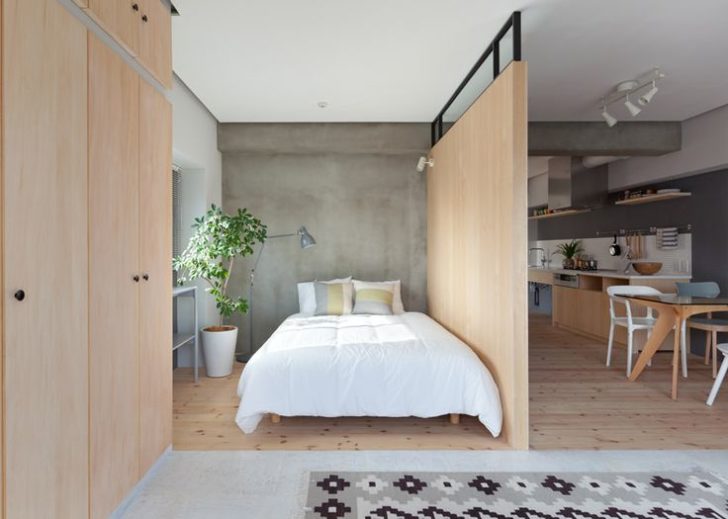
Japanese style is ideal for open-plan apartments
Carpets will have to be sacrificed in favor of mats. Massive furniture and favorite walls are also exchanged for low tables and a modest sofa. Such are the Japanese visions of comfort. Everything you need to organize your life is laid out on the floor. This does not mean that comfort in the Japanese interior style has been forgotten. The houses of the Japanese are full of technology, and not just electrical appliances, but "smart" and robotic. With such assistants, doing homework is more fun. Household appliances of even the coolest design, which we would put almost on a pedestal, are hidden by modest Japanese in special closed compartments.
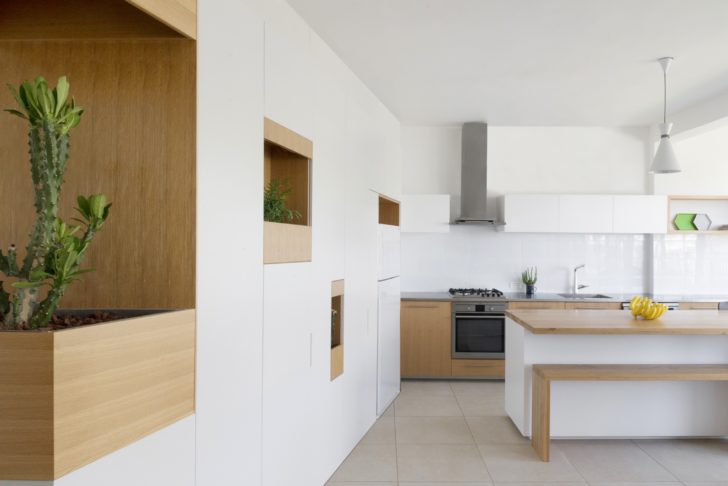
Household appliances are hidden in special closed compartments
Clothes and other accessories are put away in secret niches arranged in the walls. Due to the minimalism of the Japanese-style interior, storage systems are often made transformable.
Since the housing of the Japanese is even more modest than our small-sized ones, they strive to initially make its space multifunctional. Lightweight partitions and mobile screens will help with this. Usually the Japanese "seclude" when they want to sleep or work.
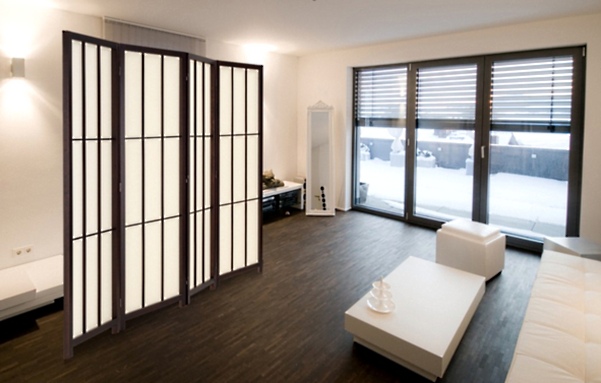
Mobile screens in space zoning
Japanese philosophy promotes the unity of man with nature, so there is no place for modern decoration materials in the design of a Japanese-style apartment.
Color solutions
The palette of the Japanese interior is light. Her pastel colors make you feel relaxed. Their task is to help you forget the troubles of everyday work and immerse your mind in complete peace. To implement the idea of contrasting, white, black, chocolate color is used.
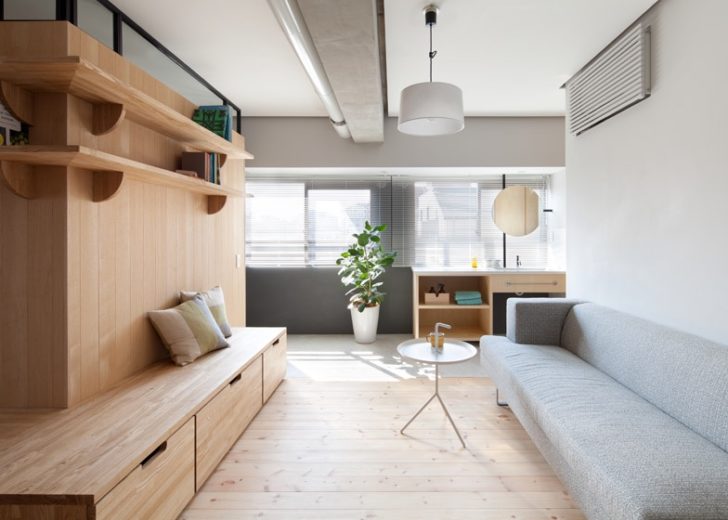
Pastel colors are relaxing
Home plants make Japanese-style decor elements in the interior. Now about everything in more detail.
Walls
“When recreating the Japanese style in the interior, they do not use catchy details”
Are you familiar with the Eastern philosophy of energy? The traditions of the Japanese style are completely subordinate to this teaching. The walls in such a house are always just a background, the task of which is to emphasize the contrast of the dark wood of the furniture and the meager decor, so they are decorated with matte pastel colors. Of the finishing materials in the methods of decorating the Japanese interior, it is allowed to use:
- rattan;
- matting;
- pebbles;
- bamboo;
- paper or other wallpaper with a natural texture.

The walls are decorated with matte pastel colors.
When recreating the Japanese style in the interior, they do not use catchy details. It is important not to forget to equip niches in the walls. In our conditions, this is easiest to do with drywall. Of course, part of the area will be ruthlessly eaten, but the necessary atmosphere will appear. After all, it is in the niches in the Japanese style that they have an elegant decor.
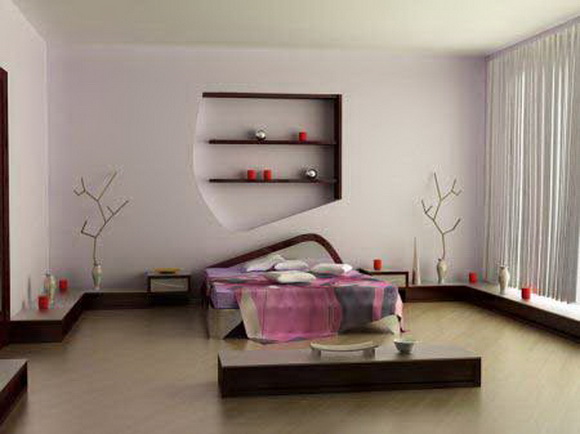
The decor is located in niches
Japanese screens are a substitute for walls and the most important piece of furniture. Their wooden frames are covered with rice paper or silks.Designs are used to quickly divide areas according to their functionality. So in one space it becomes possible to organize a place for receiving guests, an office, a corner of relaxation, and so on.
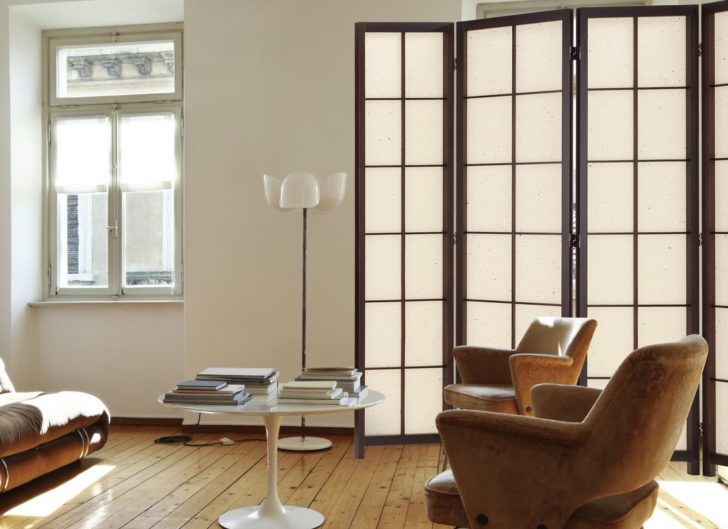
Japanese screens are the most important piece of furniture
Living Room Design Ideas
The Japanese style in the interior of the living room is simply magnificent. He is loved for his originality. The austerity of the situation gives the room a special charm. The atmosphere is conducive to positive communication. Staying in such an environment is not burdensome. Time flies by here.
With all the minimalism, it is quite possible to organize an excellent recreation area in the Japanese-style interior. For its formation, two low and fairly wide sofas are used, which can accommodate both guests and hosts.
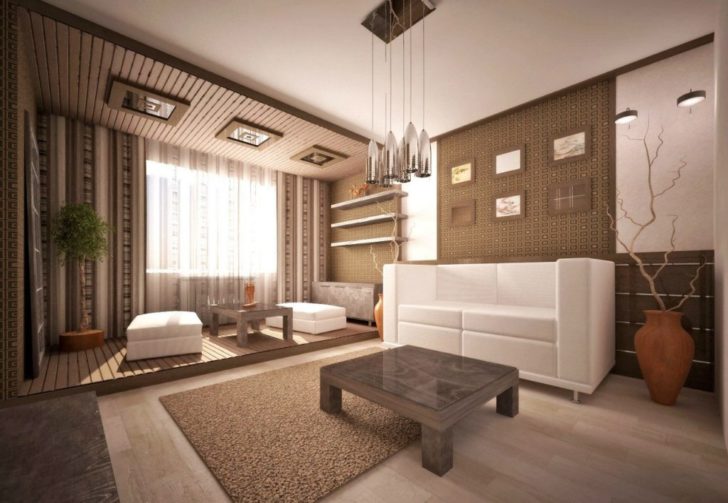
Japanese style living room design project
In the archives of professionals there is an interesting technique for decorating a Japanese interior with a small table with colorful pillows spread around it. In such a simple way, you can get a nice little corner for tea drinking.
A good solution would be the arrangement of niches in the walls. Modest interior decorations, such as original figurines, flower arrangements and vases, may be displayed there. This is quite enough to demonstrate the Japanese design orientation. A cacophony of knick-knacks abhors a strict style.

Cozy tea corner
Advice. To enliven the atmosphere, you can use a beautiful screen or decorate the window area with beautiful curtains in Japanese ornaments.
The desire to observe the traditions of the Japanese style in the smallest detail cannot but be commendable, but we must take into account the inability of our people to sit on the floor and low sofas for a long time. This can cause discomfort, which should not be allowed. So it’s still better to adapt the interior to your needs than to endure inconvenience for the sake of style.
ceilings
This is perhaps the most difficult part of the work in creating the Japanese style in the interior. There are several finish options. First of all, let us clarify that, like the walls, the ceilings are made exclusively in light solutions, but now the choice of their decoration is ahead. Dark beams located around the perimeter can be launched along the ceiling. This is the easiest way to create a space geometry effect. The ceiling surface can be divided into large squares with slats. It is permissible to hide it under a multi-level suspended structure or stretch ceiling canvas.
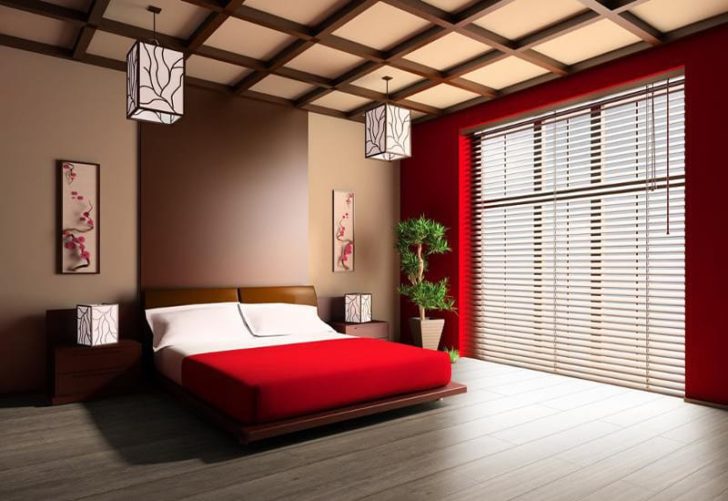
Dark beams create the effect of the geometry of space
Suspended ceilings are considered to be very successful methods of decorating the Japanese interior. Sections assembled from a geometrically clear form of modules can be decorated with lighting. This will simultaneously give a practical and symbolic effect. Such diffused lighting is very typical for real Japanese houses.
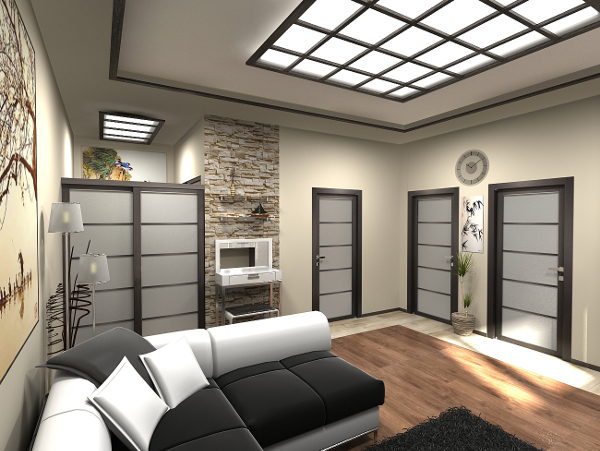
False ceiling with backlight will give diffused lighting
Walls can also be decorated with dark wood slats. In the case of walls, especially symbolic ones (wooden partitions), slats can be replaced by ornamental patterns in a traditional theme. Images of birds, bamboo, sakura also carry the idea of unity with nature.
floors
"Japanese style tradition of using mats on the floor"
Here the choice of materials for decorating an apartment in the Japanese style is quite small. Floor finishing is acceptable in wood, stone or mats. Color solutions are mostly close to the natural colors of the materials, but sometimes designers go for contrasting and then the floors get wine, white, chocolate, and maybe even black.

Bright burgundy floor
Another Japanese style tradition is the use of floor mats. They are very helpful in organizing the space of the room, but they must be used according to special rules. You can't just scatter the tatami squares randomly.They must be laid out in the most accurate way so that in no case do they touch the edge, let alone crawl on top of each other. According to Japanese beliefs, this brings problems to the house. since the rugs are made from rice straw, their service life is very short. They will have to be changed at least twice a year, which can also be considered a wonderful opportunity to diversify the interior of a Japanese-style apartment.
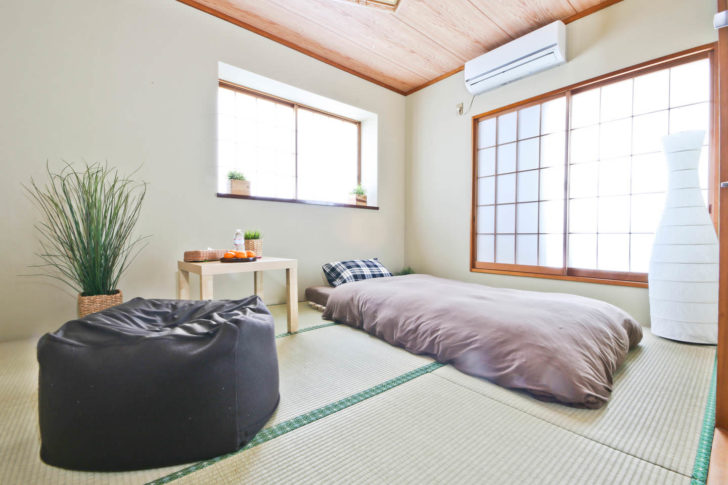
Use of floor mats
Lighting
The traditions of the Japanese style dictate the specifics of lighting. Here they prefer to spend time in diffused light poured out by specific lamps. In general, there should be a lot of lamps in such a space. The secret is that the construction of a wooden or bamboo frame and rice paper lampshade is able to illuminate only a scant part of the room, specifically in the place where it is located. The rest of the space will remain in pleasant twilight. The Japanese call such lamps Akari. Actually, this specific lamp was created for the possibility of intimate lighting at home.
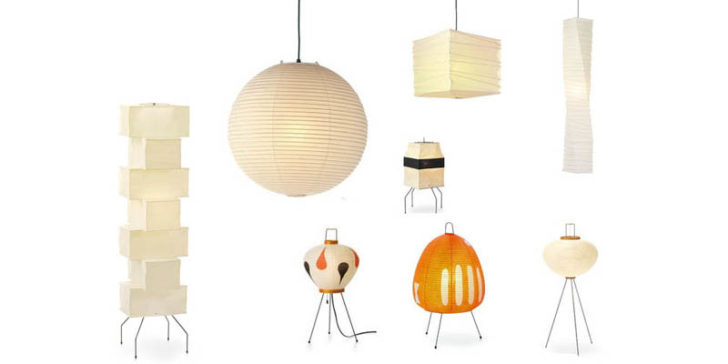
Traditional akari lamps
Given the thrust of the Japanese style to the use of screens in the interior, it becomes clear that there should be a sufficient number of such akari and other lamp options in the room. But it is unacceptable to turn on all light sources for a Japanese interior at the same time. It is famous for its relaxing and mysterious semi-darkness.
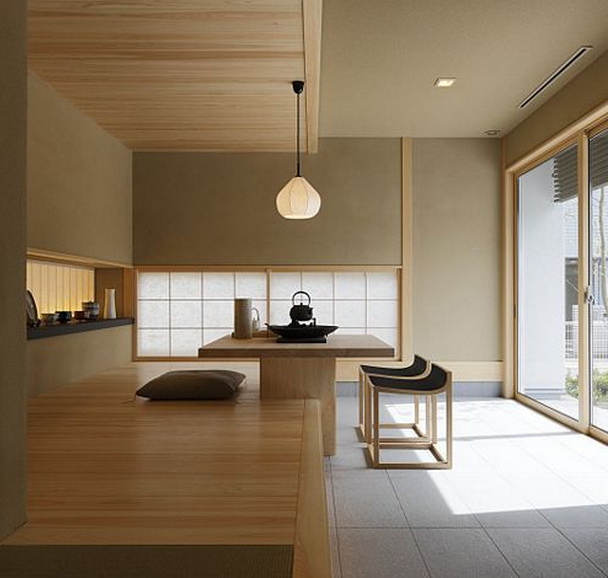
Japanese style in the interior emphasize diffused light
Textile
Of course, textile elements are also not alien to the traditions of the Japanese style. Curtains are sewn from silk and linen, rugs and mats are made from matting. The cotton is used to make screens. There are techniques for decorating a Japanese interior using suede and even leather. The fabrics used can be printed. They often have a floral pattern on them. Their surface can be decorated with hieroglyphs and leaves.
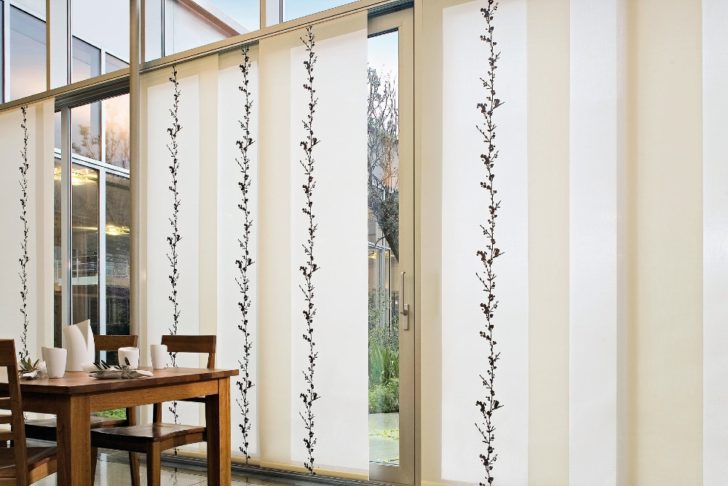
Japanese style window decoration
Furniture
The minimalism of the Japanese-style interior imposes a limit on everything, including the number of pieces of furniture. It is rare to see anything in the setting other than a bed, a sofa, a couple of tables and a tiny chest of drawers. No spacious wardrobes, sideboards, cozy armchairs that are familiar to our consumer. Storage systems are veiled. If it is impossible to organize them within the walls, they resort to adding chests to the interior. The latter, by the way, in combination will become seating.

Do not overload the living room space with a lot of furniture
Japanese-style furniture is characterized by low height. This creates the illusion of space. For finishing elements of upholstered furniture, suede, linen, leather, sometimes cotton are used. The decor of furnishings, in general, is not provided, but if desired, it is acceptable. They can be painted with hieroglyphs. The interior will become more expressive, and the soul will be breathed into objects.
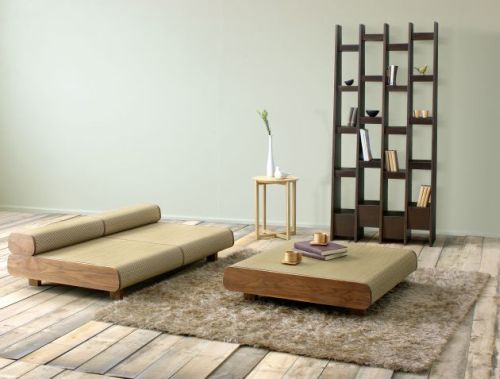
Low furniture will create the illusion of space
The second feature of Japanese-style furniture is geometricity. Sofas are given a cubic shape and completed with ascetic backs, which are not possible to lean back on. A lush night bed is replaced by strict and hard fruton beds.
The contrast inherent in the Japanese interior style is closely tied to the furniture. It is she who is opposed to the general background of the finish, so the designs are made either in very dark colors, or as bright as possible. The surface of objects is practically devoid of structure and looks perfectly smooth.

Contrasting furniture contrasts with the general background of decoration
You can choose among shades:
- black ash;
- mahogany;
- dark walnut;
- beech;
- cherries;
- light birch.
Accessories
The philosophy of minimalism does not deprive the Japanese style in the interior of decorative elements, however, it recommends adding exceptionally refined and expressive details to the decor that carry a semantic load and have a load of years in the archive. For the decoration of the apartment in the Japanese style fit:
- landscapes and engravings;
- a set of gaiwans for tea ceremonies;
- miniature bonsai;
- flashlights;
- china.
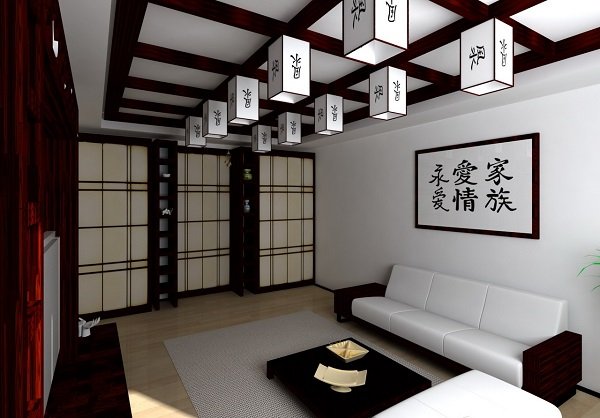
Japanese lanterns
In addition to paintings, majestic fans are often placed on the walls. They are placed in the same plane, so as not to allow attention to dissipate.
But for the main decor items, the Japanese assigned a special place - wall niches. It is on their glass shelves that you can see real works of art. They store caskets and expose netsuke figurines, seat interior dolls and lay out scrolls containing wise quotes. It will harmoniously look in the minimalism of the interior in the Japanese style antiques.
back to index ↑Bedroom Design Ideas
Given the Spartan conditions in which most of our fellow citizens live, decorating a bedroom interior in a purely Japanese style will be unrealistic, but it will be possible to try to get as close as possible to the dream. The same notorious minimalism and naturalness remain the characteristic features of the situation. Bamboo, rice paper, wood, traditional textiles are used for finishing. The background solution is done in soft colors. The floors here are better to make contrasting.
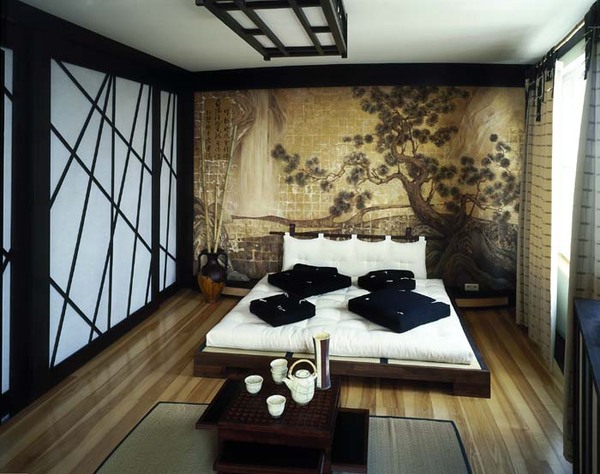
Japanese style in the interior of the bedroom
It is necessary to take care of the natural lighting of the room. A good move would be the arrangement of ceiling lighting. Try to make the ceilings themselves suspended.
The minimalism of the Japanese-style interior will be emphasized by a strict low bed. Ideally, arrange a sleeping place from a mattress lying on the podium.
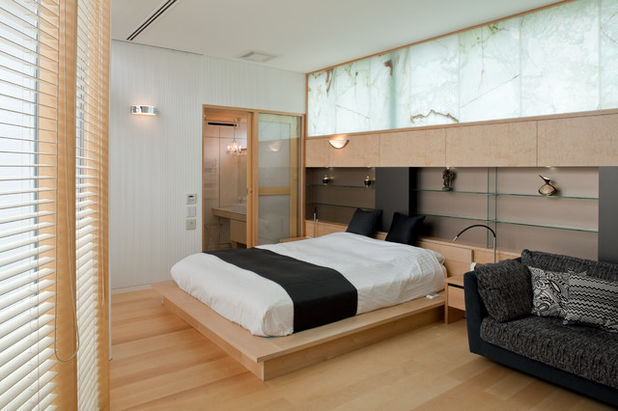
The mattress on the podium will emphasize the minimalism of the interior
In the Japanese bedroom there is no place for wardrobes and walk-in closets, so you have to learn how to store everything you need in storage systems veiled under the walls. The maximum that can be allowed to be added from Japanese-style furniture is a small chest of drawers. For greater convenience, it is permissible to place a simple laconic form of bedside tables near the bed.
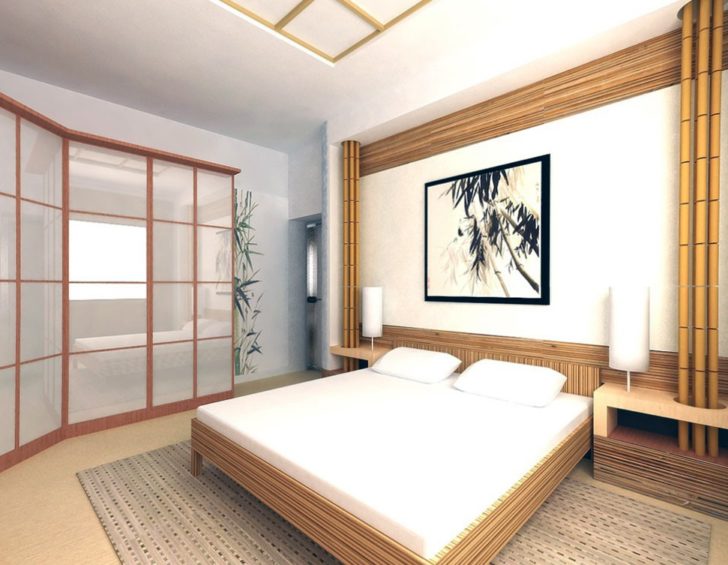
Bedside tables of a simple concise form
Kitchen Design Ideas
"Japanese-style furniture impresses with its functionality"
Japanese style in the interior of such a room as a kitchen can only be afforded by super housewives. The principles of minimalism are quite rigid, so before you give in to the realization of your dream, think about whether you can maintain the traditions of the Japanese style in full?
The question, of course, is about the purity, more precisely, the sterility of space. It must be freed from everything superfluous. Despite the fact that everything you need will be removed from under your hands, Japanese cuisine manages to remain the most comfortable and rationally planned for working on it.
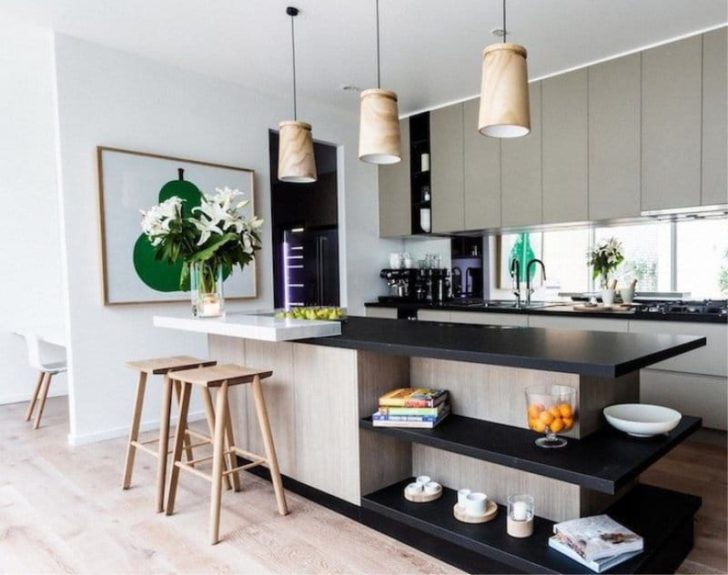
Japanese style in the interior of the kitchen
Japanese-style furniture impresses with its functionality. Outwardly compact, it manages to contain a lot of useful items in its bowels, which, if necessary, can be extracted literally with one touch. Often these are modular systems controlled by electronics.

Kitchen furniture is simple and functional
Facades made of plastic will not work. Here it is necessary to give preference to unpainted wood or glass. Countertops can be carved from stone. Lockers only with opaque doors. They must hide their content.

Kitchen cabinets should hide all contents
The overall finish is the same light range of colors with contrasting inclusions. So that the situation does not seem boring, it is permissible to revive it slightly.
Japanese interior decorating techniques are standard: indoor plants and wooden structures on the ceiling and walls.
The crockery is the most primitive. But there are no restrictions when it comes to technology.The kitchen can be literally stuffed with it, the main thing is that all these appliances are hidden.

Household appliances are hidden
Japanese-style kitchen furniture is also expressive in its small height. In the dining area, you can use a corner or the usual, familiar to us, table with chairs. For a characteristic stylization, you can use the following method of decorating a Japanese interior: put pillows embroidered with hieroglyphs on the seats.
Of the additional accessories, it is also recommended to give preference to drawings and engravings with images of hieroglyphs, as well as flower arrangements.
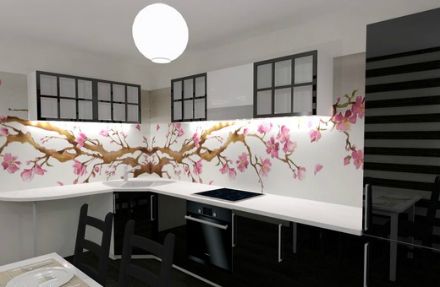
The pattern on the apron emphasizes the style
Bathroom Design Ideas
In a Japanese-style apartment - a bathroom of a special rank. The Japanese are sensitive to cleanliness, and when they wash, they cleanse not only the body, but also the soul. Having plunged into the font, the Japanese relax, try to get rid of mental anguish and nervous tension and try to find peace.
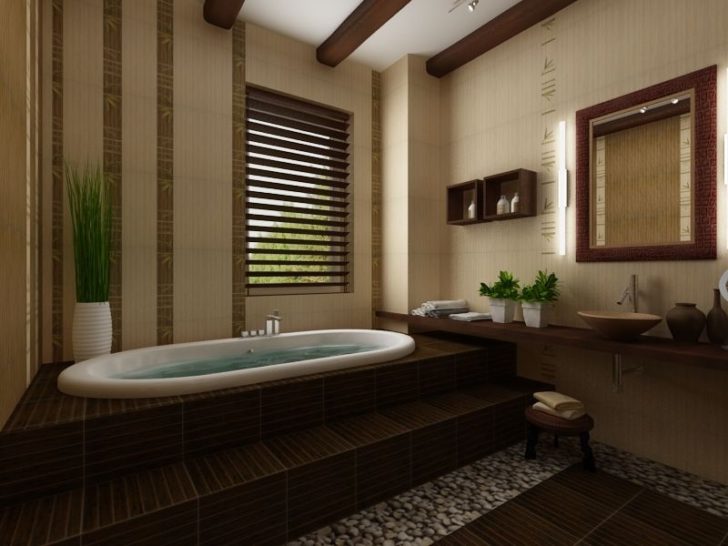
Japanese style in the interior of the bathroom
Unlike our baths, in the tradition of Japanese style, they do not allow you to immediately fill the bath with hot water. It should be heated directly in the container. Previously, Japanese fonts looked like hinoki barrels standing on a stove that heated water. Today, these are quite modern plumbing fixtures that stand out for their original design.
back to index ↑Conclusion
As you can see, with the rigid minimalism of the Japanese-style interior, in the end you can still get apartments that are chic in every respect. The main thing is to accept and understand the stylistic postulates in order to feel comfortable and cozy surrounded by Japanese culture.
Photo gallery - Japanese style in the interior
Video

